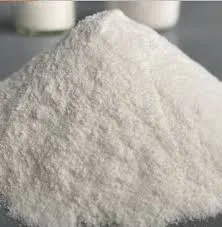
gru . 24, 2024 09:34 Back to list
hydroxypropyl methylcellulose uses in tablets
The Role of Hydroxypropyl Methylcellulose in Tablet Formulations
Hydroxypropyl methylcellulose (HPMC) is a cellulose derivative that has found extensive application in the pharmaceutical industry, particularly in tablet formulations. This polymer is prized for its versatility and unique properties, which contribute to the effectiveness, stability, and overall quality of pharmaceutical tablets. This article explores the various uses of HPMC in tablet formulations, emphasizing its crucial roles in enhancing drug delivery systems.
1. Binding Agent
One of the primary roles of HPMC in tablet formulations is as a binding agent. Tablets require a cohesive structure to maintain integrity and ensure proper drug delivery. HPMC helps in binding the active pharmaceutical ingredients (APIs) and excipients together, providing sufficient strength to withstand mechanical processing and during handling. This binding characteristic is essential for maintaining tablet hardness and preventing disintegration before ingestion.
2. Disintegration and Dissolution
HPMC plays a significant role in controlling the disintegration and dissolution processes of tablets. The presence of HPMC enables the tablets to break down at the appropriate rate when introduced into the gastrointestinal tract. HPMC’s ability to swell upon contact with water aids in creating a gel-like structure, enhancing the solubility of the drugs contained within the tablets. This property is particularly beneficial for controlled-release formulations, where a consistent release rate is critical for therapeutic effectiveness.
HPMC is widely utilized as a film-coating agent in tablet production. The film coating serves multiple purposes, including protecting the tablet from environmental factors, masking unpleasant tastes, and improving the aesthetic appeal of the product. Additionally, HPMC-based coatings can be designed to be enteric, ensuring that the tablet dissolves only after it has passed through the acidic environment of the stomach, thereby enhancing the bioavailability of specific drugs.
hydroxypropyl methylcellulose uses in tablets

4. Matrix Formulations
HPMC is commonly used in matrix formulations for extended-release tablets. The polymer forms a gel when exposed to fluids, which traps the drug and regulates its release over time. This controlled release minimizes the frequency of dosing, improves patient compliance, and maintains therapeutic drug levels in the bloodstream. Additionally, HPMC’s hydrophilic properties ensure a predictable release profile, making it a valuable excipient in sustained-release formulations.
5. Stability Enhancement
Stability is a critical aspect of pharmaceutical formulations, and HPMC contributes positively in this regard. Its moisture-retention capability helps protect sensitive APIs from degradation due to humidity and temperature fluctuations. This stability is essential for maintaining the efficacy and shelf-life of the tablets, ensuring that patients receive effective medication over the duration of the product's expiry.
6. Compatibility with Other Excipients
HPMC exhibits excellent compatibility with various other excipients commonly used in tablet formulations. This compatibility makes it an ideal choice for formulators looking to create complex formulations that may include other polymers, fillers, and lubricants. Its adaptability and synergistic effects with other components can enhance the overall performance of the tablet, including its texture, stability, and bioavailability.
Conclusion
Hydroxypropyl methylcellulose is an indispensable component in the formulation of pharmaceutical tablets. Its multifunctional properties—serving as a binder, disintegrant, film-coating agent, stabilizer, and matrix former—make it a favorite among formulators aiming to create effective, reliable, and patient-friendly medications. As the pharmaceutical industry continues to evolve, the role of HPMC is likely to expand further, contributing to the development of innovative drug delivery systems and enhancing patient care through improved therapeutic outcomes. With its proven efficacy and safety, HPMC will remain a cornerstone in the formulation of high-quality tablets, benefiting both manufacturers and patients alike.
-
The Widespread Application of Redispersible Powder in Construction and Building Materials
NewsMay.16,2025
-
The Widespread Application of Hpmc in the Detergent Industry
NewsMay.16,2025
-
The Main Applications of Hydroxyethyl Cellulose in Paints and Coatings
NewsMay.16,2025
-
Mortar Bonding Agent: the Key to Enhancing the Adhesion Between New and Old Mortar Layers and Between Mortar and Different Substrates
NewsMay.16,2025
-
HPMC: Application as a thickener and excipient
NewsMay.16,2025
-
Hec Cellulose Cellulose: Multi functional dispersants and high-efficiency thickeners
NewsMay.16,2025







